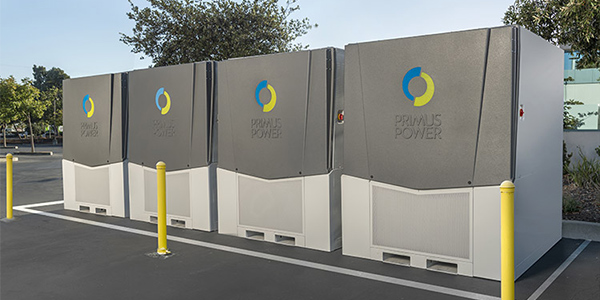The PJM Planning Committee last week approved an initiative to develop rules for “if and how” storage should be considered in the Regional Transmission Expansion Plan (RTEP) process.
The storage as a transmission asset (SATA) issue charge was approved May 12 by an acclamation vote with one objection and no abstentions after some stakeholders expressed misgivings about the potential that storage could be a transmission asset at times and a market participant at others.
PJM is looking to develop “transparent rules” by the end of the year for how it would evaluate storage’s performance and cost and whether it could be an alternative to traditional transmission reinforcements. Proponents say storage could be dispatched by the RTO to address thermal, voltage or stability violations or to relieve transmission constraints.
During a first read of the problem statement and issue charge April 14, some PC members raised issues with PJM’s proposal, questioning its scope and timing. (See Stakeholders not Sold on PJM SATA Plan.)
During last week’s second read, PJM’s Jeff Goldberg said staff made several changes to reflect stakeholder and internal feedback. “While PJM’s approach to SATA hasn’t changed, some sections were entirely rewritten to incorporate comments and give clarity to PJM’s goal,” Goldberg said.
To address stakeholders’ concerns that the concept of SATA is an unsettled issue, staff added a paragraph to the problem statement citing two FERC decisions regarding proposed SATA systems in CAISO. The first was a 2010 decision approving transmission incentives for a project by Western Grid Development (EL10-19); the second was a 2008 denial for a project proposed by Nevada Hydro (ER06-278).
Wording was also added to the problem statement to clarify that PJM has not decided “whether or not storage assets should be included” in the RTEP.
Goldberg said Phase 1 of the process will be focused on identifying gaps in existing transmission planning rules for evaluating storage. Because PJM is the NERC-registered transmission planner and must be comply with reliability standards, Phase 1 also will identify any operations impacts that need to be addressed in Phase 2.
Issues regarding SATA implementation, such as telemetry requirements, are out of scope for Phase 1.
The RTO acknowledged the potential for SATA’s dual use.
“PJM recognizes that the evaluation of the cost-effectiveness of a given storage solution to a transmission reliability or market efficiency need could be impacted by the question of whether and how the unit would participate in the market,” the issue charge says. “Nevertheless, this issue is derivative of the primary question, to be answered in this Phase I, as to the feasibility of evaluat[ing] energy storage purely as a transmission asset.”
“We’re taking a measured approach,” Goldberg said.
Carl Johnson of the PJM Public Power Coalition said he appreciated the “significant changes” the RTO put into the problem statement and issue charge to address stakeholder concerns.
“I’m not enthusiastic about having this conversation because I’m not enthusiastic about the possibility of looking at dual use,” Johnson said. “But I understand where PJM is, which you may see these things approved somewhere on the system through a process that isn’t the RTEP and you’ll have to figure out how to incorporate those.”
John Brodbeck of EDP Renewables also said he wasn’t enthusiastic about bringing up the issue of SATA. He said he would have liked more clarity on how projects would be paid for and who could bid on a project.
“I’d like to make sure that there’s an Order 1000 process; that if we’re going to do storage as a transmission asset, we make sure that in order to build this, things are made available to everyone in the marketplace,” Brodbeck said.
PC Chair Dave Souder said making sure projects were open to competition would be part of the interest identification in Phase 1, so it wouldn’t be out of scope.
The committee will hold monthly special sessions beginning around June to work on the initiative. Proposed changes to manuals or other governing documents are expected to be completed by the end of the year.



